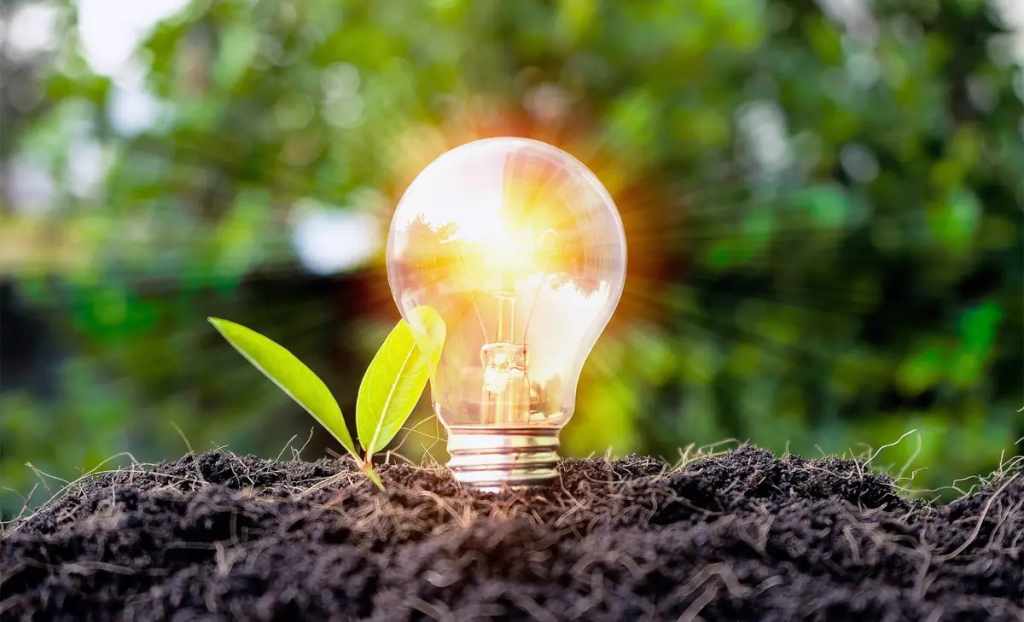Tags
“Electric soil” boosts crop production and plant growth by 50% in just 15 days

By Eric Ralls Earth.com staff writer
With climate change and limited resources creating tough challenges, researchers are trying out different methods to improve agricultural productivity and crop yields. You might be surprised by one of the answers they’ve come up with: electric soil.
This technique involves applying electrical currents to the soil, which has been found to stimulate plant growth, enhance nutrient uptake, and improve overall crop health.
By tapping into the power of electricity in farming, scientists hope to develop more sustainable practices that can lead to better yields and greater food security for everyone.
Electricity + soil = tremendous plant growth
Leading this study was Eleni Stavrinidou, an esteemed associate professor at Linköping University in Sweden.
Together with her team, she discovered that barley seedlings grew up to 50% more in just 15 days — all thanks to some electric jolts to the soil in which their roots were growing.
Stavrinidou emphasizes how desperately we need to evolve our cultivation strategies.
She asks, “With the population explosion and climate change, can we keep up with the food demands of the planet with only the existing agricultural methods?”
The answer, she believes, lies in urban hydroponics, a form of controlled farming that doesn’t rely on soil.
Hydroponics and urban farming
Before we dig into the electrifying soil revelation, let’s get our hands dirty with hydroponics. Hydroponics is a revolutionary farming method that’s been gaining momentum, particularly in urban landscapes where space is scarce.
In hydroponic systems, plants don’t need soil to grow. Instead, they are nurtured in nutrient-rich water, with substrates providing the much-needed support.
But what’s really eye-catching about hydroponics is its efficiency.
Hydroponic systems consume significantly less water than traditional farming because the water is reused, and each plant gets exactly what it needs — not an ounce more, not an ounce less.
Electric soil (eSoil) is a real game-changer
Now let’s talk about eSoil, the secret sauce in Stavrinidou’s study.
The pivotal element that sets eSoil apart is its blend of cellulose (the material that constitutes plant cell walls) and a conductive polymer known as PEDOT.

The resulting concoction paves the way for the root stimulation that fosters unprecedented growth.
Not just that, eSoil is also a far greener alternative to the mineral wool substrates widely used in hydroponic setups today.
It’s biodegradable, consumes less energy during production, and did I mention the growth-boosting electrical conductivity?
Stunning results
The electric buzz didn’t stop at the breakthrough. When Stavrinidou and her team put eSoil to the test, the results were, quite literally, shocking.
Barley seedlings on eSoil outgrew their non-electrified counterparts by 50% in a mere fortnight.
“In this way, we can get seedlings to grow faster with less resources. We don’t yet know how it actually works, which biological mechanisms that are involved,” Sarvrinidou explains.
“What we have found is that seedlings process nitrogen more effectively, but it’s not clear yet how the electrical stimulation impacts this process.”
Looking ahead, Stavrinidou acknowledges that hydroponics won’t entirely address global food security concerns. “But it can certainly be a lifeline, particularly in areas with limited arable land and harsh environmental conditions,” she adds.
Food security and sustainable agriculture
eSoil and hydroponics are both such important tools because food security has become an increasingly pressing concern as the world’s population expands.
Challenges such as climate change disrupt weather patterns and impact crop yields, while resource limitations like water scarcity and soil degradation further complicate food production.
These issues lead to higher prices and heighten the risk of hunger and malnutrition in vulnerable communities.
How can we effectively tackle these challenges? Embracing sustainable agriculture practices is essential for boosting food production while safeguarding the environment.
Techniques such as crop rotation, organic farming, and efficient water management can enhance soil health, conserve precious resources, and reduce greenhouse gas emissions.
Combining all of these methodologies with electric soil and hydroponics will help us reach global food security goals much faster.
Electric soil and the future of farming
Envision vertical farms housed in urban skyscrapers, producing fresh produce right in the heart of the city. Or hydroponic systems in desert regions, cultivating crops with minimal water.
And let’s not forget about long-term space missions — efficient food production strategies, such as eSoil, would indeed be invaluable.
With much still to uncover about how electrical stimulation impacts plant growth, the journey doesn’t stop here. Could this technique work for other plant types? How are other nutrients influenced by electric stimulation?
As Stavrinidou said, this study is just the tip of the iceberg, and the pursuit of answers will undoubtedly “open the pathway for new research areas to develop further hydroponic cultivation.”
There’s no question about it — as we grapple with food production challenges on a global scale, innovative solutions like eSoil could be a shot in the arm for agriculture.
A future where robust plants grow faster using fewer resources, where fresh produce is accessible within bustling cities, could be on the horizon. And it all starts with a jolt of electric soil.
The full study was published in the journal PNAS.
https://www.earth.com/news/electric-soil-esoil-boosts-crop-production-by-50-in-just-15-days/Published Date: September 26, 2024






